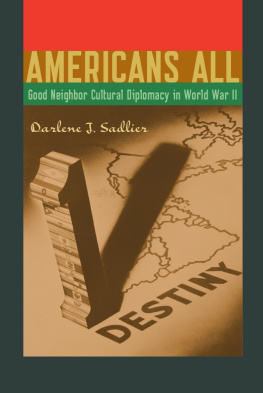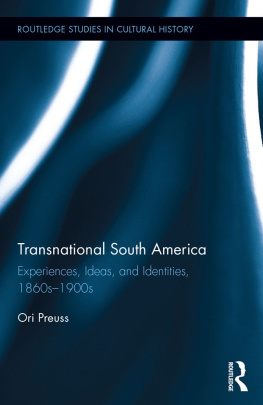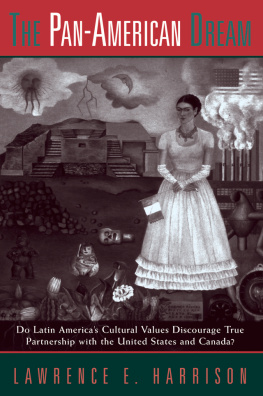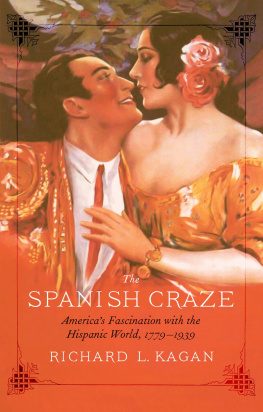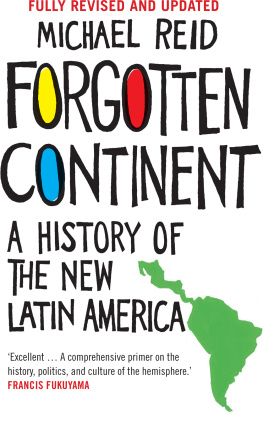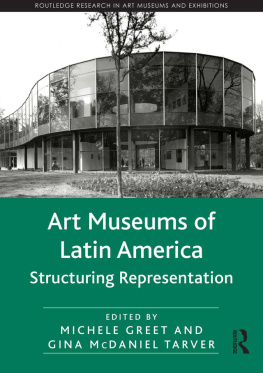Improvised Continent
THE ARTS AND INTELLECTUAL LIFE
IN MODERN AMERICA
Casey Nelson Blake, Series Editor
Volumes in the series explore questions at the intersection of the history of expressive culture and the history of ideas in modern America. The series is meant as a bold intervention in two fields of cultural inquiry. It challenges scholars in American studies and cultural studies to move beyond sociological categories of analysis to consider the ideas that have informed and given form to artistic expressionwhether architecture and the visual arts or music, dance, theater, and literature. The series also expands the domain of intellectual history by examining how artistic works, and aesthetic experience more generally, participate in the discussion of truth and value, civic purpose and personal meaning that have engaged scholars since the late nineteenth century.
Advisory Board: Richard Cndida Smith, Steven Conn, Lynn Garafola, Charles McGovern, Angela L. Miller, David M. Scobey, and Penny M. Von Eschen.
Copyright 2017 University of Pennsylvania Press
All rights reserved. Except for brief quotations used for
purposes of review or scholarly citation, none of this book
may be reproduced in any form by any means without written
permission from the publisher.
Published by
University of Pennsylvania Press
Philadelphia, Pennsylvania 19104-4112
www.upenn.edu/pennpress
Printed in the United States of America on acid-free paper
10 9 8 7 6 5 4 3 2 1
A catalogue record for this book is available from the
Library of Congress.
ISBN 978-0-8122-4942-2
Ya que no hablamos para ser escuchados
Sino para que los dems hablen
Nicanor Parra
Now that we do not speak solely to be heard
But so that others may speak
translation by William Carlos Williams
In March 1945, Brazilian novelist rico Verssimo stopped in Abilene, Texas, as part of a three-week tour of Texas, Oklahoma, Kansas, and Kentucky, where he spoke at nineteen locations about the place of pan-American unity in the global fight against fascism and militarism. Abilene was then a medium-sized town of fifty thousand in the middle of the cattle and petroleum country of northwest Texas. Some six hundred people showed up for an afternoons activities at Abilene Christian College. The meeting ground was decorated with U.S. and Brazilian flags, as well as cowboy gear from Texas and Brazil. After singing the Star Spangled Banner, the audience was led in singing the Brazilian national anthem in English translation. A program of North American and Brazilian folk songs followed. Once again the audience sang along with translated lyrics projected onto a screen. Two songs were performed in Portuguese, so the audience could hear how they sounded in the original language.
After the cultural program, rico Verssimo presented a fifty-minute talk with slides entitled Brazil, the Gentle Giant.Americans would quickly become as familiar with Brazil as they were with England or France.
At the end of his talk he received a thundering ovation from the crowd. The event concluded with a buffet of typical Brazilian food (menu not identified, but churrascaria, Brazilian barbecue typical of the southern region that was Verssimos home, would have been comfortably similar to Texas barbecue), and a chance for conversation with the speaker. The president of the college rushed up to him after the talk with an invitation to spend a year in Abilene as a visiting professor. It was a proposal that other academic hosts across the United States often made him after his appearances. The success of Verssimos first English-language publication, the novel Crossroads, had made him the most widely read Latin American writer in the United States, a position he maintained for the next two decades as eight more books appeared to critical and commercial success. Like many other writers and artists from Latin America, he had accepted a proposal from the U.S. State Department that he live in the United States for the duration and contribute to the wartime alliance by giving average U.S. citizens a sense of personal connection with Brazil, a country about which most knew very little.
Verssimos talks were part of a massive program the federal government sponsored through the course of the war utilizing speakers and media to introduce U.S. citizens to the many countries in the United Nations alliance. Latin Americans were, by far, the most frequently employed allied speakers because, for the previous thirty years, private organizations in the United States had already been promoting closer cultural interaction between the United States and the twenty other countries in the Pan American Union. The first formal cultural exchange programs between the United States and Latin American countries were launched in 1912 with pilot funding from the Carnegie Corporation, and then significantly expanded in 1916. Other philanthropies joined in, as did educational institutions, museums, libraries, and commercial publishing and media companies, plus of course the government, for which both pan-Americanism and cultural exchange had important roles to play in the countrys broadest foreign policy objectives. An extensive network of personal and institutional relations took shape before World War II that allowed a select group of Latin American writers and artists to enter U.S. cultural markets and speak directly to the U.S. public.equality. Others, like Mexican painter David Alfaro Siqueiros or Brazilian historian Srgio Buarque de Holanda, wondered how a country as deeply racist as the United States could have become the leader of a global alliance fighting to end racism. Many more were like Argentinean writer Mara Rosa Oliver, who thought that the United States, like most places, was a mix of things positive and negative. The international responsibilities the United States had assumed made it imperative that any writer or artist who could address the U.S. public take advantage of the opportunities pan-Americanism offered. The writers and artists featured in this book were a diverse group, whose differences and disagreements were more important than the commonality they shared within the United States as representatives of a region. Even so, they understood that their ability to speak directly to people in the United States was a privilege that came with obligations to help whoever encountered their work see inter-American, and ultimately global, relations from the perspective of an intellectual from another country. What they had to say was often critical, but like rico Verssimos public appearances, generally aimed to help people in the United States become better global citizens.
This would never be an easy task, given that both pan-Americanism and cultural exchange rested on an unstable synthesis of utopian ideals and the rise of the United States as a world power. The Pan American Union, founded in 1890, was the first institutional expression of a new vision of global organization that the United States vigorously promoted throughout the twentieth century. For the next seventy-five years, pan-Americanism provided U.S. leaders with a test case for developing an international system consonant with their countrys distinctive institutions.


